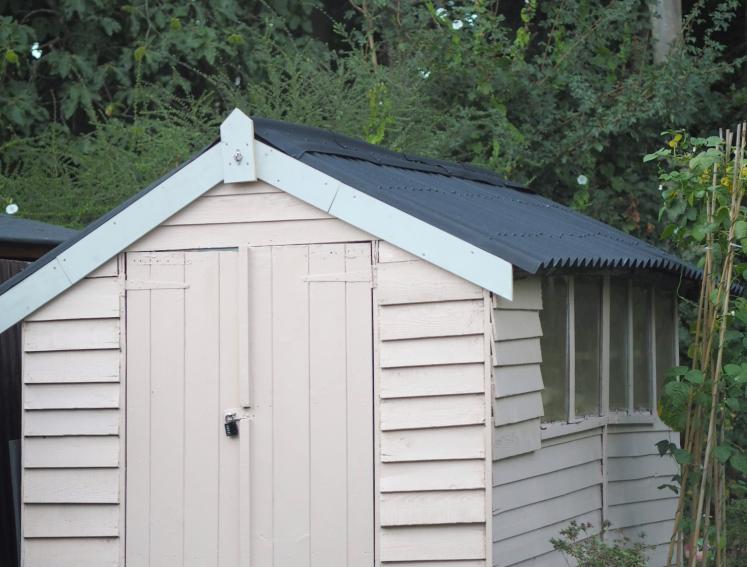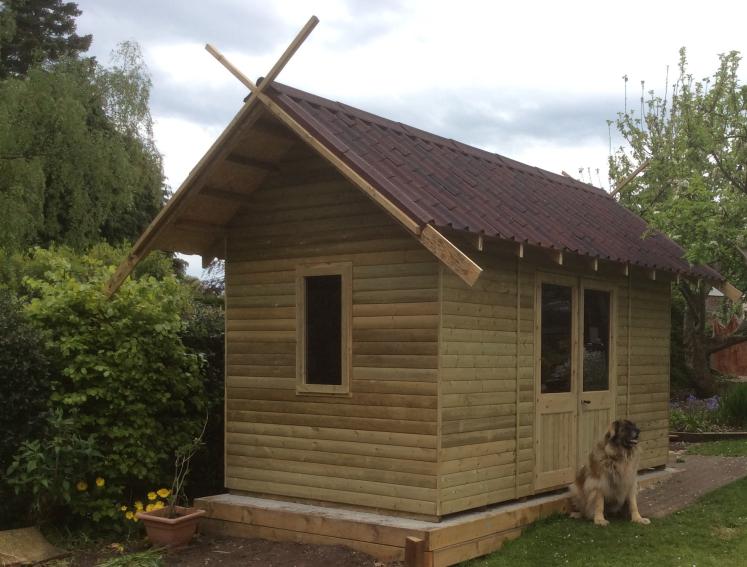Feeling frustrated because of a sagging or leaking shed roof? We're here to help with our top tips on how to repair it!
No matter what you use your shed for, whether it’s purely for storage, as a hobby room or maybe even a garden bar, you’re likely to feel upset or even annoyed if its roof begins to sag or leak. If you’ve noticed your shed roof is sagging or leaking, it’s time to address the issue! Don’t leave it to rack and ruin, it’ll end up costing you more. Don’t go out and buy a whole new shed either, we guarantee the problem will be easier to fix than you think.
Let’s look at the issues first…
A sagging and leaking shed roof
Whether your shed is facing both of these issues or just one, the roof is likely to be feeling a little weak. If your shed roof is sagging, it’s likely you’ve noticed it bowing on the inside, if it’s leaking, you’ve probably noticed some water inside your shed.
What are the causes?
Sagging is mainly caused by too much weight on top of your shed roof and not enough support underneath so start by checking for and clearing any debris and pooling water. If pooling water is the cause of your shed roof’s sagging, you’re going to want to check for leaks too!
Although pooling water can cause leaks, leaks are more common than sagging as tears, cracks, missing pieces of your roofing material and general wear and tear can also be a cause of a leaking shed roof.
Remember...shed maintenance is hugely important and if you are not regularly clearing debris and water , you need to start making this part of your garden maintenance routine otherwise your shed roof is more at risk of becoming damaged.
How to repair a sagging roof
Once you’ve cleared the debris and water, you can start the repair. The best way to do this is to add additional support to your shed roof from the inside. Fit new rafters and don’t just focus on the affected area, fit them across the full shed roof to prevent sagging in other areas.
When should you replace a sagging shed roof?

When there is too much damage!
Another reason your shed roof might be sagging is because the roofing material is too heavy. This, along with the roof being too damaged for repair, is when you should look to fully replace your shed’s roof. Be on the lookout for a lightweight material but don’t compromise on quality!
All of our roofing sheets are super lightweight and they are proven to withstand strong winds, heavy downpours and even snow. Each comes with a minimum watertightness guarantee of 10 year’s too so you can feel reassured that your new shed roof will stand the test of time.
How to repair a leaking roof
Depending on the existing material of your shed’s roof and how much damage the leak has caused, you may be able to repair your roof by simply replacing the section that is leaking. Torn or cracked roof felt is a good example of this.
To repair roof felt you’ll only need basic tools such as a hammer, utility knife, nails and a tape measure - the same ones you may have used to install your felt in the first instance.
- Step one - You may need to remove your shed’s ridges, also known as fascia boards, to access the damaged felt
- Step two - Remove the damaged felt by prying off the existing nails with a hammer (or flat head screwdriver). Be careful not to cause added rips and tears
- Step three - Measure and cut your new piece of felt to the correct size in order to replace the existing piece you have just removed. Allow a two-inch overlap on all sides
- Step four - Attach the new piece of felt with nails and make sure there are no lumps and bumps
- Step five - Reattach your shed’s ridges (fascia boards)
When should you replace a leaking roof?

When felt will no longer do!
If your felt is too damaged or you have lost faith in the material itself - although it is one of the cheapest options for roofing it is also one of the most easily damaged materials - then it may be time to replace it.
Some materials may require you to remove the felt before installing the new but most of our roofing sheets, like our CLASSIC and ONDUVILLA ranges, can be easily applied on top with just the addition of wooden battens. And, as with felt, they are easy to install and require only the basic tools.
Final tip
Before you go ahead with any repair or replacement make sure you have fully checked the condition of your timber structure. The last thing you want is to find this has been damaged too, especially if you have already made the effort to repair or replace your roof, as you’ll find yourself needing to undo all your hard work just to redo it all over again!
Hopefully you have found these quick tips on how to repair your leaking or sagging roof helpful. If you have since decided you’d rather replace your roof completely, our lightweight and easy-to-install roofing can be purchased via our eShop as well as select ranges available via The Range, Amazon, and Wickes.
Discover the full range at onduline.co.uk.